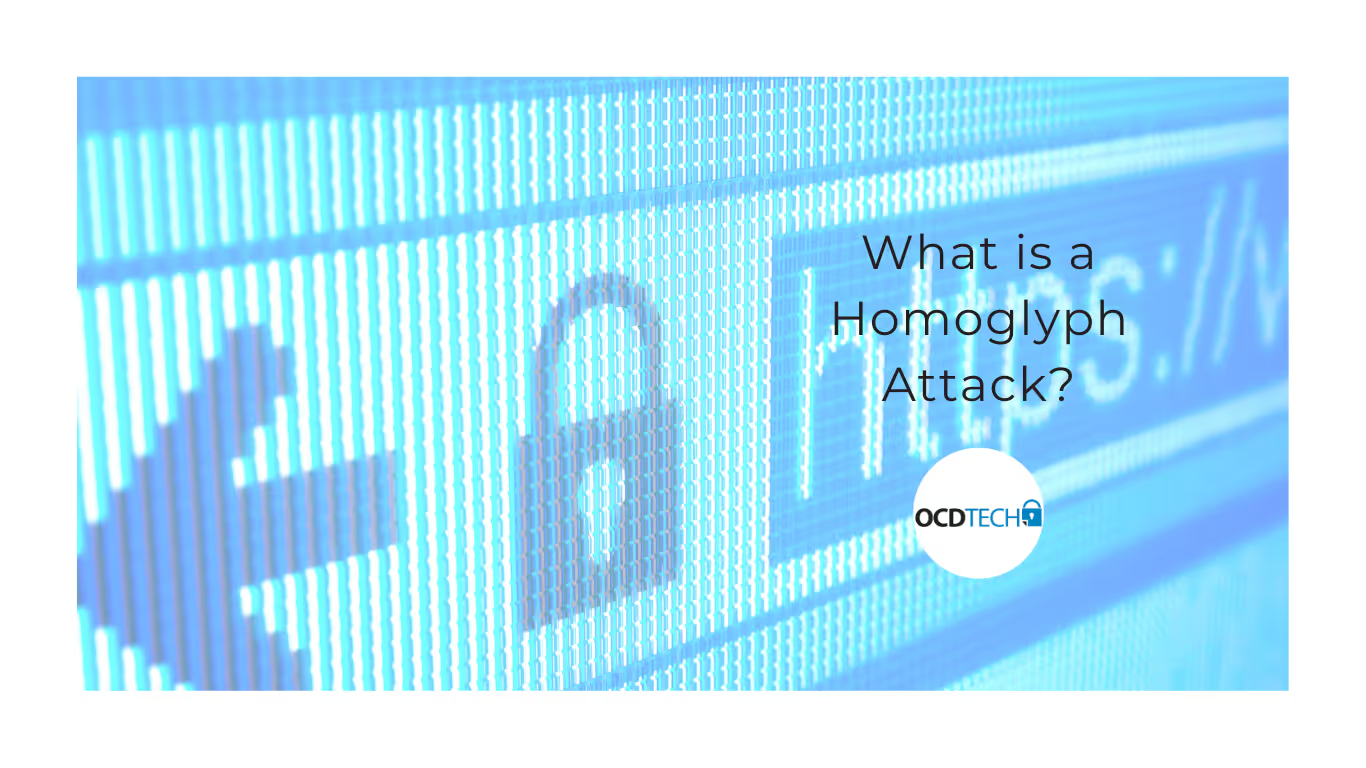By
OCD Tech
March 3, 2023
•
10
min read

In a homoglyph attack (also sometimes called a homograph attack), the threat actor uses homoglyphs to spoof a URL or obfuscate code.
Homoglyphs are characters that resemble each other, such as the letter O and zero (‘0’), the Latin letter “H” and the Cyrillic letter “H,” or the uppercase “I” (“I”) and the lowercase letter “l” (L), which look identical in a sans serif font (like Calibri). In advanced phishing attacks today, phishing emails may contain homoglyph characters.
For example, the attacker might create a fake URL that spoofs a legitimate URL by using a homoglyph, like “InternationalBank.com,” switching out the letter sans serif letter “I” (“I”) for the lowercase sans serif letter “l” (L). Or the threat actor might use homoglyphs in the malware code to hide nefarious intent by inserting them into code strings that to the naked eye look normal but instead instruct the malware to do something different, like change the code’s perceived intent, such as making an ‘if’ statement always true or redirecting the user to a malicious domain.
How is this different from typosquatting?
Although typosquatting also uses visual tricks to deceive users, it relies heavily on users mistyping a URL in the address bar, hence, the "typo" in its name.
Are all homograph attacks just phishing attacks?
Not necessarily. Although homograph attacks usually involve phishing, threat actors could create fake yet believable websites for other fraudulent purposes or to introduce malware onto user system.
Reports about IDN homograph attacks, have noted that several homographed domains found were either part of a malvertising network, hosting exploit kits and malicious mobile apps, or generated by botnets.
Protection Against Homograph Attacks
Users are suggested to be vigilant when browsing online and maintain cybersecurity hygiene, including:
OCD Tech specializes in making sure employees understand the mechanisms of spam, phishing, spear-phishing, malware, and social engineering.
Source: https://www.feroot.com/education-center/what-is-a-homoglyph-attack/

Audit. Security. Assurance.
IT Audit | Cybersecurity | IT Assurance | IT Security Consultants – OCD Tech is a technology consulting firm serving the IT security and consulting needs of businesses in Boston (MA), Braintree (MA) and across New England. We primarily serve Fortune 500 companies including auto dealers, financial institutions, higher education, government contractors, and not-for-profit organizations with SOC 2 reporting, CMMC readiness, IT Security Audits, Penetration Testing and Vulnerability Assessments. We also provide dark web monitoring, DFARS compliance, and IT general controls review.
Contact Info
.svg)
OCD Tech
.svg)
25 BHOP, Suite 407, Braintree MA, 02184
.svg)
844-623-8324
.svg)
https://ocd-tech.com
Follow Us
Videos
Check Out the Latest Videos From OCD Tech!
Services
SOC Reporting Services
– SOC 2 ® Readiness Assessment
– SOC 2 ®
– SOC 3 ®
– SOC for Cybersecurity ®
IT Advisory Services
– IT Vulnerability Assessment
– Penetration Testing
– Privileged Access Management
– Social Engineering
– WISP
– General IT Controls Review
IT Government Compliance Services
– CMMC
– DFARS Compliance
– FTC Safeguards vCISO